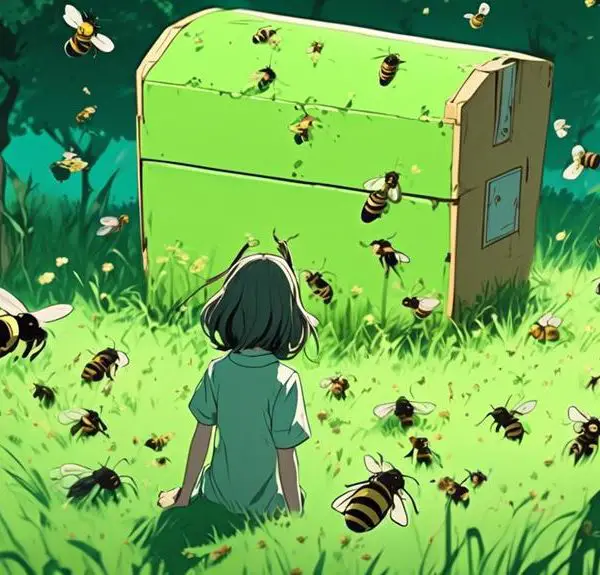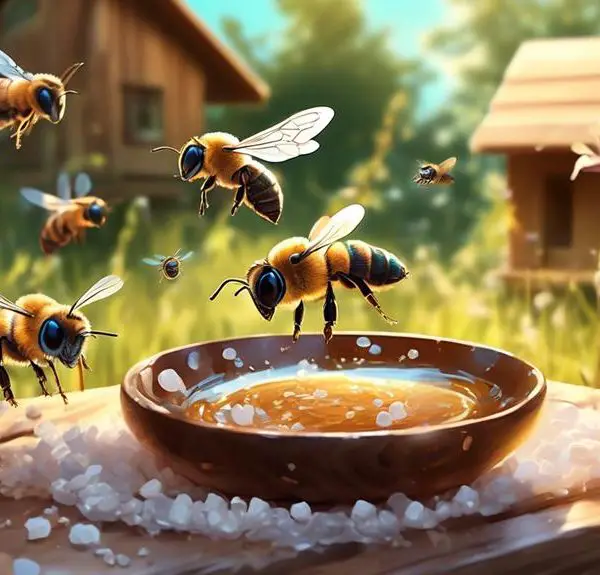Navigate the complexities of painting mason bee houses, balancing aesthetics with bee safety, in this insightful guide.
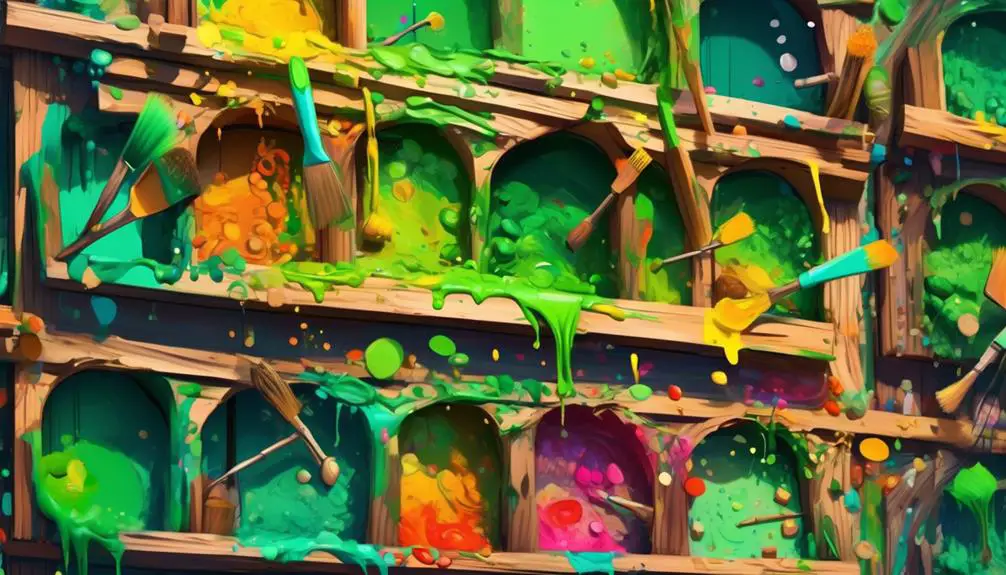
Can You Paint Mason Bee Houses?
To paint or not to paint, that's the question. When it comes to mason bee houses, you might be surprised to find that the answer isn't straightforward. While you're certainly able to spruce up these tiny abodes with a splash of color, there are a few factors you need to consider.
What type of paint is safe for these beneficial insects? Is there a specific painting process you should follow? And, most importantly, does painting impact the wellbeing of the bees themselves? Let's explore these intriguing questions further.
Key Takeaways
- Mason bee houses provide a suitable environment for solitary bees to lay their eggs.
- Using safe paints free from volatile organic compounds (VOCs) is important when painting bee houses.
- Light, warm colors like yellow, beige, or light blue attract mason bees.
- Regular maintenance and cleaning of painted bee houses are necessary for their longevity and effectiveness.
Understanding Mason Bee Houses

Before you start painting your mason bee house, it's essential to understand what a mason bee house is and why it's beneficial for these industrious insects. Mason bees are solitary bees that don't live in hives like honeybees. Instead, they seek small, narrow tunnels where they can lay their eggs. A mason bee house mimics this environment, providing a safe and convenient place for these bees to reproduce.
Mason bee houses aren't only beneficial for the bees themselves but also for the environment. Mason bees are prolific pollinators, even more so than honeybees. By providing them with a suitable habitat, you're helping to boost local pollination and biodiversity. Plus, as mason bees are non-aggressive, they're great for urban and suburban gardens.
Painting your mason bee house can give it a personal touch and help it blend into your garden aesthetics. However, it's crucial to remember that the paint used must be safe for the bees. Using non-toxic, water-based paints is highly recommended. So, before you pick up that paintbrush, ensure you're well-informed about mason bees and their needs.
Choosing Safe Paints and Materials

When it comes to painting your mason bee house, it's crucial to select paints and materials that won't harm these beneficial insects. Consequently, you should opt for paints free from volatile organic compounds (VOCs). These compounds can evaporate into the air at room temperature, potentially causing harm to the bees. Water-based paints are a good choice, as they typically contain lower levels of VOCs.
Next, consider the paint's color. Mason bees are attracted to light, warm colors such as yellow, beige, or light blue. These colors can help attract more bees to your house. However, avoid using metallic or glossy paints. These can reflect light in a way that deters bees.
Step-by-Step Painting Guide
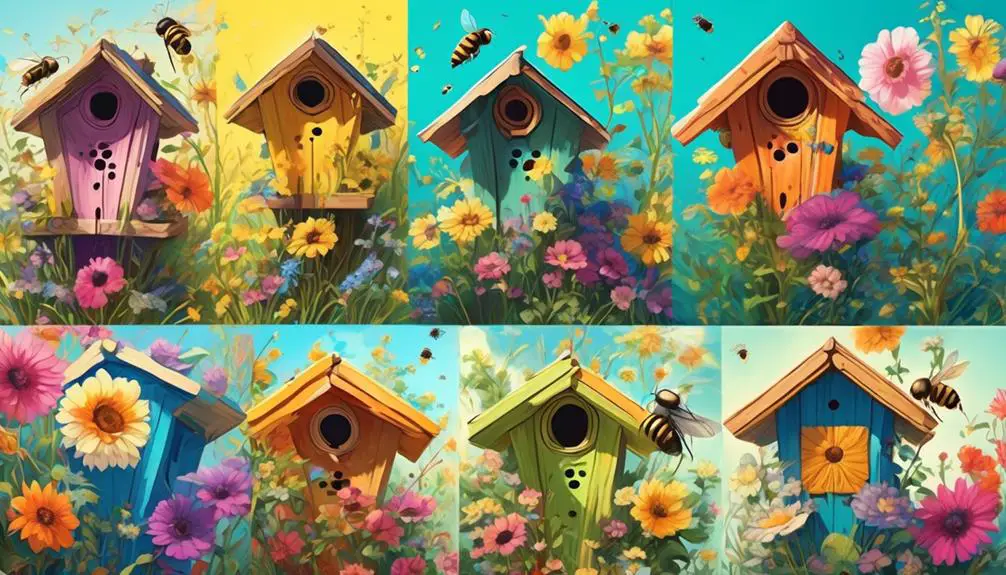
Having selected paints that are safe and inviting for mason bees, it's time to guide you through the step-by-step process of painting your mason bee house.
First, ensure your bee house is clean and dry. Any existing paint or varnish should be removed to create a clean canvas for your bee-friendly paint.
Next, it's time to apply your paint. Use a brush that's suitable for the size of your bee house and the type of paint you're using. Apply the paint evenly, ensuring all areas are covered but not overly saturated.
Finally, allow the painted bee house to dry thoroughly before placing it outdoors. This could take anywhere from a few hours to a few days, depending on your paint and the weather conditions.
Here's a quick reference table for your convenience:
Step | Instructions |
|---|---|
1. Preparation | Ensure bee house is clean and dry, remove any existing paint |
2. Painting | Use appropriate brush to evenly apply paint |
3. Drying | Allow the painted bee house to dry thoroughly before placing outdoors |
Post-Painting Care and Maintenance
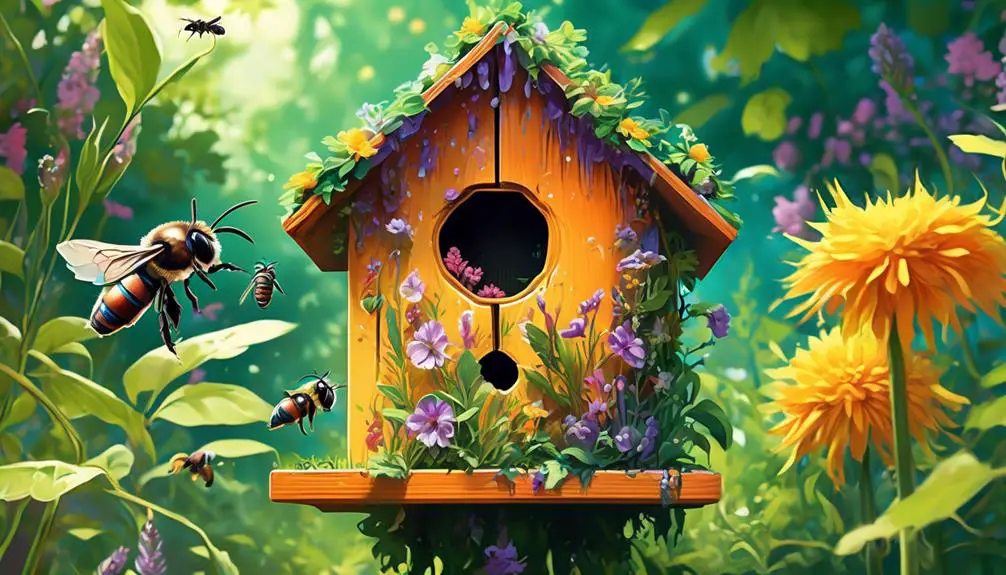
Once your mason bee house is painted and dry, it's critical to follow a regular maintenance routine to ensure its longevity and effectiveness. The painted surface acts as a protective barrier against weather elements, but it's not completely maintenance-free.
Regular inspections are key. Check for signs of wear and tear, such as chipping paint or wood damage. If you spot any, you'll need to touch up the paint or repair the wood. Remember, bees prefer houses that are in good condition.
Keep an eye out for mold or mildew, as these can harm the bees. If you find any, clean it off gently with a solution of one part bleach to ten parts water. Rinely thoroughly and allow it to dry before reintroducing it to the bees.
You'll also want to clean out the nesting tubes regularly. Old cocoons can harbor pests and diseases, so remove them at the end of each season. Use a flexible brush and warm water to clean the tubes, then let them dry completely before reassembling the house.
With careful post-painting care and maintenance, your painted mason bee house can serve as a safe and inviting home for these beneficial pollinators for many seasons to come.
Impact of Painting on Mason Bees
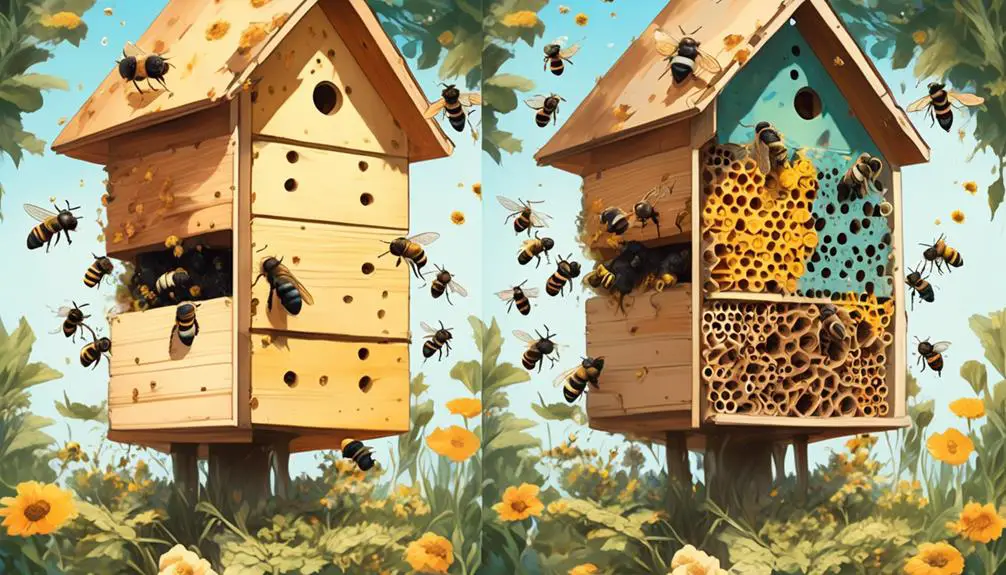
The paint choice for your mason bee house can significantly impact these industrious pollinators' well-being and productivity. Certain paint types, especially those containing volatile organic compounds (VOCs), can be toxic to mason bees. VOCs emit gases that can harm the bees' respiratory system, impair their navigation skills, and reduce their lifespan. It's vital to opt for paints free from VOCs, heavy metals, or other harmful components.
Painting the interior of the house isn't recommended. Bees prefer natural, untreated wood surfaces for nesting. They're sensitive to the paint's smell, which can deter them from occupying the house. The texture of the paint can also affect the bees' grip, making it harder for them to move around and lay eggs.
Temperature regulation is another aspect to consider. Darker paints absorb more heat, which could lead to overheating, especially in summer. Conversely, lighter colors reflect heat, maintaining a more stable, cooler environment conducive to mason bees.
Conclusion
Absolutely, you can paint mason bee houses! But remember, it's crucial to choose non-toxic paints that won't harm the bees or the environment.
Follow the painting guide carefully, and always maintain the house post-painting to ensure it's a safe space for the bees.
Painting can indeed make your mason bee house more attractive, but let's ensure it doesn't compromise the well-being of the busy, beneficial mason bees.

